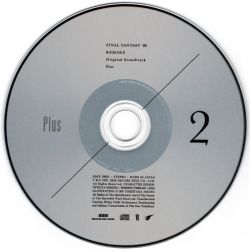

This includes Wall Market, the Train Graveyard, and the Sector 7 Pillar we took areas that could not be fully expressed back then and focused on reimagining those locations.Īre there any sections of the original that were deemed “sacred” and not subject to change? As such, there are many locations in which we challenged ourselves to largely “remake” the presentation while maintaining the essence of the original. “Paying homage to the source material” served as a basis, but the original game is over 20 years old and the way in which many aspects were depicted back then could seem either outdated or unsuitable for this day and age. By filling in these gaps, and making the traversal more realistic, we really wanted to create a deeper level of immersion, and of course that gives us more time and moments with the characters. Naoki Hamaguchi: There are many aspects that are somewhat departures from the original, but we aimed to deliver a game experience that players would find “familiar yet new” rather than “completely new.” We wanted to not have to cut away from the characters as much as in the original game, where you would really be traversing across fixed screens, rather than areas.

How did you decide what areas and characters should be expanded upon and what moments should stay the same? This game has a few major departures from the original.

Kitase and Hamaguchi dove into their “familiar yet new” approach to adapting a classic, bringing Sephiroth into the story earlier than anticipated, the defining new music track created for the game by legendary composer Nobuo Uematsu, and more. Without diving into the ending in granular detail, Final Fantasy VII Remake producer Yoshinori Kitase and co-director Naoki Hamaguchi answered some questions about the game in an email exchange with The Hollywood Reporter. (Food for thought: Will one of the most iconic deaths in video game history still happen in a future installment of the Final Fantasy VII Remake project? As it stands, what was once a given now feels like a wide-open unknown, for better and for worse.) Fans of the original game were treated to a largely faithful adaptation over the course of Remake, but as the ending indicates, the guardrails are now well and fully off, with massive deviations in the story all too possible. The result: a new Final Fantasy VII narrative that now resides in “boundless” but “terrifying” freedom, according to Aerith herself. The final act of Remake features Cloud, Aerith, Tifa, Barret and new ally Red XIII battling both Sephiroth and these whispers, in fact arbiters of fate itself, in a metaphysical war to rewrite history. But just how drastically new? By the end of the line, the answer to that harrowing question made itself known, if not yet fully known.

Starting with the game’s second chapter, in which silver-haired antagonist Sephiroth makes an early debut and a small army of hooded “whispers” appear to terrorize local florist Aerith Gainsborough, Final Fantasy VII Remake was clearly offering up something new in its retelling of the classic.


 0 kommentar(er)
0 kommentar(er)
